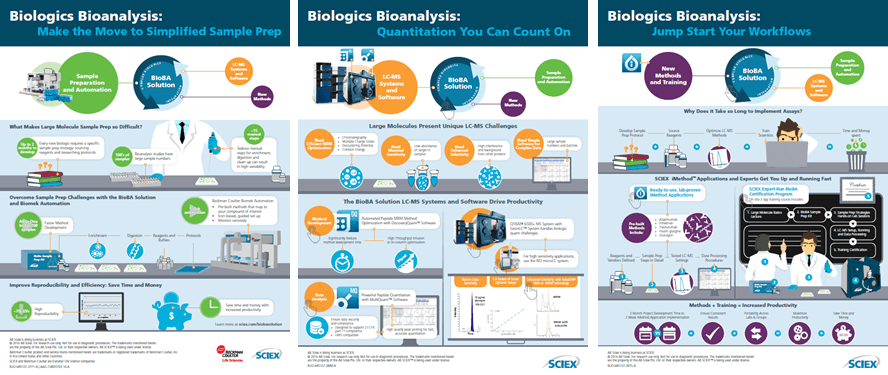 The move to large molecules in Pharma is accelerating, offering unprecedented opportunities to improve human health and expand into new markets. But for those with extensive experience with small molecule bioanalysis, the shift to biologics can be challenging, from Sample Prep to Instrumentation and Software, to Methods and Training:
The move to large molecules in Pharma is accelerating, offering unprecedented opportunities to improve human health and expand into new markets. But for those with extensive experience with small molecule bioanalysis, the shift to biologics can be challenging, from Sample Prep to Instrumentation and Software, to Methods and Training:
- Sample Prep is complex
- Every new biologic requires a specific sample prep strategy: sourcing reagents and researching protocols
- Bioanalysis studies have large sample numbers
- Tedious manual steps for enrichment, digestion, and clean-up can result in high variability
- Instrumentation and Software have to be up to the task
- Efficient MRM optimization is required for chromatography, multiple charge states, declustering potential and collision energy
- Maximal sensitivity is needed for low abundance samples
- Enhanced selectivity is important to overcome matrix interference
- Simple software for complex data is essential, which can handle large sample sets and batches
- Methods and Training are needed to get running quickly
- You have to develop your sample prep protocol, source reagents and optimize your LC-MS methods, which can take months
- You have to train your scientists to understand and run the new methods: how are you going to do it?
The challenges seem daunting, but SCIEX can help you overcome them with relative ease. Download a three-part infographic that addresses all three challenges and describes the solutions with links to useful reference material. The SCIEX BioBA Solution will get you up and running quickly and painlessly.Download Infographic >







 Contact Support
Contact Support
0 Comments